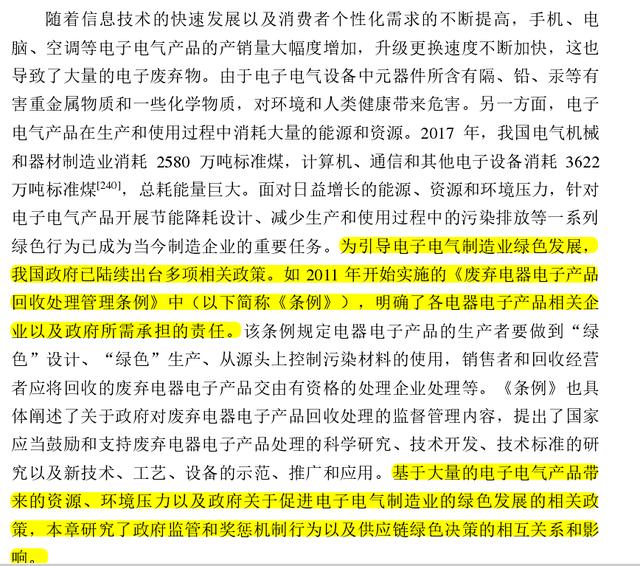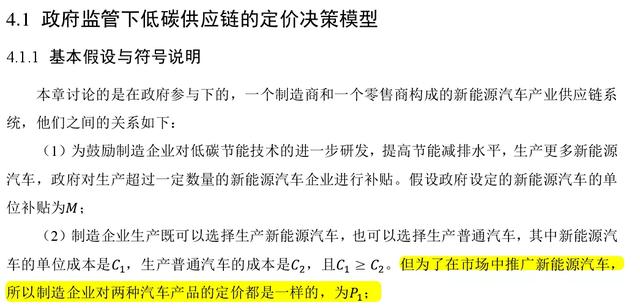
演化博弈模型的构建
今天的琦文分享栏目,小编将带领大家学习演化博弈模型的构建,演化博弈模型的构建中,我们常常会碰到以下问题:1.模型无法计算下去,例如期望收益函数求一阶导的时候,函数就已经直接等于0了,使我们模型无法继续分析下去。2.模型的计算结果与现实相违背,或者不具备现实意义。针对这两个问题,小编将和大家一起从他人的模型中学习如何构建演化博弈模型。今天我们将从期刊《中国管理科学》中挑选了《政府动态奖惩机制下绿色建筑供给侧演化博弈研究》学习演化博弈模型的构建。
In today’s Qiwen sharing column, the editor will lead you to learn the construction of evolutionary game models. In the construction of evolutionary game models, we often encounter the following problems: 1. The model cannot be calculated, such as the expected return function to find the first derivative. At that time, the function is directly equal to 0, making our model unable to continue the analysis. 2. The calculation result of the model is contrary to reality or does not have practical significance. In response to these two issues, the editor will work with you to learn how to build evolutionary game models from other people's models. Today, we will select the "Evolutionary Game Research on the Supply Side of Green Buildings under the Government's Dynamic Reward and Punishment Mechanism" from the journal "Chinese Management Science" to learn the construction of the evolutionary game model.
从开发商的角度
开发商的策略选择(开发绿色建筑,开发普通建筑)。g1:绿色建筑绿色度;g2:普通建筑绿色度;p1:绿色建筑价格;p2:普通建筑价格;c1:绿色建筑边际成本;c2:普通建筑边际成本;π1:绿色建筑利润;π2:普通建筑利润。
The developer's strategic choice (development of green buildings, development of ordinary buildings). g1: green building greenness; g2: ordinary building greenness; p1: green building price; p2: ordinary building price; c1: marginal cost of green building; c2: marginal cost of ordinary building; π1: green building profit; π2: ordinary building profit.
从消费者的角度
消费者的策略选择(购买绿色建筑,购买普通建筑,不购买)。消费者效用U:消费者的支付意愿与实际支付的差值;斯塔(音译)为消费者的绿色偏好程度,P为消费者的支付意愿,k为绿色度偏好支付系数,每增加一单位绿色度消费者愿意支付的费用。P1=g1k,P2=g2k。D1:绿色建筑需求;D2:普通建筑需求。
Consumers' strategic choices (buying green buildings, buying ordinary buildings, not buying). Consumer utility U: the difference between the consumer's willingness to pay and the actual payment; Star (transliteration) is the consumer's green preference degree, P is the consumer's willingness to pay, k is the green preference payment coefficient, each additional unit Green consumers are willing to pay. P1=g1k, P2=g2k. D1: Green building demand; D2: General building demand.
从政府角度
政府的策略选择(激励约束政策,流于形式政策)。R为开发普通产品的政府收益,aR为开发不同程度的绿色产品的政府收益(a>1),C:普通建筑的环境治理成本,Cp:政府的政策成本。政府给予开发商的奖励:I=i*D1。政府给予开发商的惩罚:S=s*D2。
The government's strategic choices (incentive and restrictive policies, mere formal policies). R is the government revenue of developing ordinary products, aR is the government revenue of developing green products of different degrees (a>1), C: the environmental governance cost of ordinary buildings, and Cp: the government policy cost. The government rewards developers: I=i*D1. The penalty given by the government to the developer: S=s*D2.
模型建立
消费者购买绿色建筑的效用:
The utility of consumers buying green buildings:

消费者购买普通建筑的效用:
The utility of consumers buying ordinary buildings:

消费者不购买的效用:
The utility of consumers not buying:

然后根据效用函数之间的关系大小,计算对绿色建筑和普通建筑的需求函数。
Then, according to the relationship between the utility function, the demand function for green buildings and ordinary buildings is calculated.


开发商开发绿色建筑的利润函数:
The profit function for developers to develop green buildings:

开发商开发普通建筑的利润函数:
The profit function for developers to develop ordinary buildings:

然后证明两个利润函数是凸函数,具有极值点。然后求得最优的定价。
Then prove that the two profit functions are convex and have extreme points. Then find the optimal pricing.

然后将P1,P2带回需求函数和利润函数中:
Then bring P1, P2 back to the demand function and profit function:


演化博弈模型构建
假设政府对开发商的奖惩政策与开发商的策略选择无关,即政府采用静态补贴与静态税收政策。设开发商开发绿色建筑的概率为x,则开发普通建筑的概率为1-x;政府实施激励约束政策的概率为y,实施流于形式政策的概率为1-y,则演化博弈支付矩阵如下表所示。

根据演化博弈的基本解法,求得各个选择的期望收益以及复制动态方程。
According to the basic solution of the evolutionary game, the expected return of each choice and the copy dynamic equation are obtained.

然后根据复制动态方程求解演化稳定策略。
Then the evolutionary stability strategy is solved according to the replication dynamic equation.
参考资料:谷歌翻译
参考文献:《政府动态奖惩机制下绿色建筑供给侧演化博弈研究》(源自知网)
本文由LearningYard学苑编辑整理发出,如有侵权,请联系删除。
,




